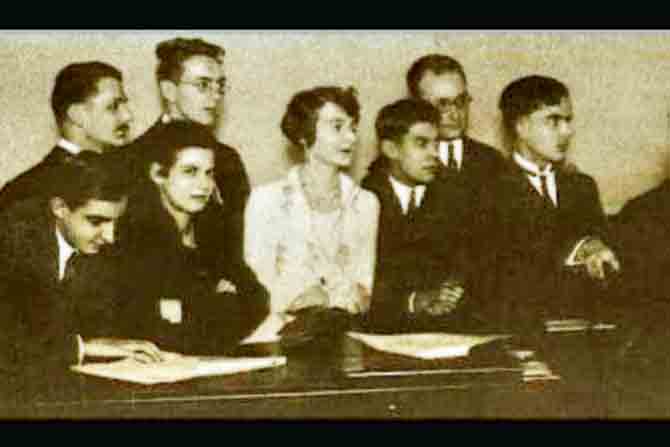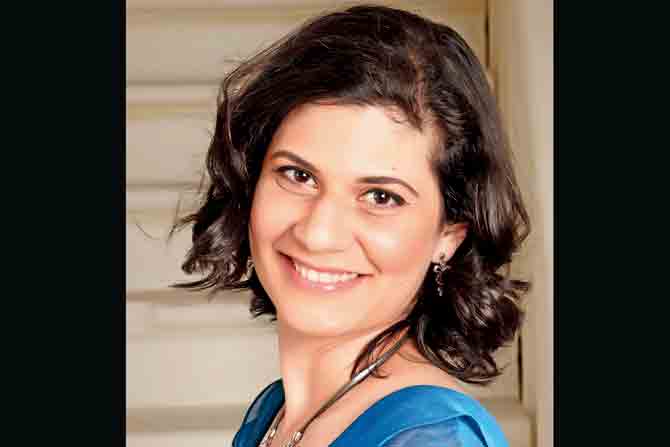A recently-launched newsletter by a Swedish musician focusses on the often overlooked work of female composers in Western classical music

French composer Elsa Barraine's work has been included in the newsletter
In 2014, Magdalena Fronczak was attending a concert celebrating the centenary of Danish women's right to vote in Copenhagen when suddenly, she thought her life had changed. The event exclusively featured pieces written by women, many of which she hadn't heard of. That day, she swore to learn everything there is about women composers in Western classical music (WCM) — who have long been overlooked or dismissed from a collective memory that is male-dominated. So, she set out to research one woman and her work each week and then post the result on Instagram (IG). She thought the project would be completed in a few months and she couldn't have been more wrong. As of April 2020, she still uploads posts on IG, and now has also launched an online newsletter titled Fantastic Women Composers & Where To Find Them — you'll get the reference, if you're a Potterhead.

Magdalena Fronczak
ADVERTISEMENT
Fronczak, 33, who lives in Gothenburg, Sweden, works with the Swedish National Orchestra as a producer and project manager. She also freelances as an oboe and baroque oboe player, repertoire consultant and writer. Having experimented with newsletters a couple of times in the past, Fronczak's first issue of this year's project is themed on woodwind quintets (an ensemble that includes the flute, oboe, clarinet, bassoon and the French horn). She explores how five women composers — Elsa Barraine, Claude Arrieu, Grazyna Bacewicz, Teresa Procaccini and Amy Beach — delved into this arrangement.
"From the very beginning, my main motivation was to find actual repertoire to be performed in the concerts I produce at the concert house. For some years we have performed at least one piece composed by a woman in almost every program, but this goal of ours has never been explicitly stated to the audience," Fronczak tells us in an email interview. Fascinatingly, the feedback she received from concertgoers and on IG wasn't the same; the audience didn't have anything to say while on social media, people expressed astonishment and anger with respect to how these women have been forgotten. "This is proof that the audience doesn't see a difference in quality between music made by women or men. They buy the same amount of tickets either way and appreciate good music regardless of if a famous name is on the title page or not," she says.

Kushmita Biswakarma
All the work mentioned in the newsletter is curated into a Spotify playlist. Having given it a listen, city-based violinist Kushmita Biswakarma who plays with the Symphony Orchestra of India, says, "I hadn't heard of these composers before. I think the compositions are well done. There was a lot of repertoire for the winds where I can't say much. But when I listened to the music I felt it had lot of different facets, colours and moods."

Elsa Barraine (standing, left) with Paul Dukas and his composition students at the Paris Conservatoire, 1929. Seated on the right: Claude Arrieu
About research, Fronczak states that although a vast amount of information is available online, you need to know what to search for. The difficulty lies in the fact that the music by women hasn't been moulded, interpreted and distributed the same way as the work by men. "For a piece by a male composer, there might be three scholarly edited editions readily available for purchase online and hundreds of recordings by the world's greatest interpreters who have thought and re-thought how to play every single note since their school days. Many times when looking for a piece by a woman composer, we might be left with a manuscript in a library that needs to be 'translated' to modern music notation, or we find copies of copies that are literally falling apart," she informs. But Fronczak also shares that things are starting to change as many other industries such as visual arts and technology are being mindful of including women's history in their "regular" history, to be in tune with the times. "After all, including women is a simple way to become relevant for twice as many people! Any economically driven person will be attracted by this fact… For anyone in the publishing business, here is a market that is longing for your services," she quips.
Having made an active effort to listen to music rather than just read, Fronczak tries her best to be in the audience wherever work by women is being performed. "I can also see that many times people aren't convinced that women's music is any good until they actually hear it. Therefore, I am very grateful to the professionals in the recording industry who take time and use their resources to produce good quality recordings for us," she says, citing Spotify, YouTube and the Naxos Classical Music Library as avenues for the same.
To ensure equal programming in orchestras, Fronczak says that the first and most important step is to realise that you don't need to be constrained by the so-called musical canon. "Don't limit yourself to the few names someone once told you made the only 'good' music — look beyond this and make up your own mind." A good example, she states, is Stockholm's The Swedish Wind Ensemble which imposed a 50-50 quota of male and female composers during its 2010/11 season. Plus, The Royal Stockholm Philharmonic Orchestra has been asking all their conductors the question, "If you were to conduct a piece composed by a woman, which one would it be?" This, in the early 19thcentury, would've confounded the expectations of Clara Schumann who wrote in her diary, "I once believed that I possessed creative talent, but I have given up this idea; a woman must not desire to compose — there has never yet been one able to do it. Should I expect to be the one?"

Farah Ghadiali
Reminiscing last year's Con Brio festival in the city that celebrated the work of Schumann and other women, soprano Farah Ghadiali would've preferred Fronczak's first newsletter to enlighten the reader on the first known women composers in the history of WCM namely, Hildegard von Bingen (1098-1179) and then Francesca Caccini (1587-1640). "It would have also been nice to read about equally and maybe more talented sisters who were outshone by their brothers because of their gender — Nannerl Mozart and Fanny Mendelssohn," she says, but understands Fronczak's intention for curating these particular pieces; quintets, that allow for five players in a room, are great during the lockdown.
Having signed up for the newsletter, Ghadiali hopes to see more instruments, including voice, featured in the future editions. "I like the fact that you can click on the composer's name and it takes you to her write-up about them," she adds. Fronczak states that she will diversify the theme of the newsletter with each issue, hoping to release about four every year, and is happy to take suggestions from readers. "The ultimate goal is, of course, that none of my channels will be needed any more, that all programmes will be equal."
Log on to www.fronczak.se/more/ (to access the past newsletters and subscribe)
Catch up on all the latest Mumbai news, crime news, current affairs, and a complete guide from food to things to do and events across Mumbai. Also download the new mid-day Android and iOS apps to get latest updates.
Mid-Day is now on Telegram. Click here to join our channel (@middayinfomedialtd) and stay updated with the latest news
 Subscribe today by clicking the link and stay updated with the latest news!" Click here!
Subscribe today by clicking the link and stay updated with the latest news!" Click here!







